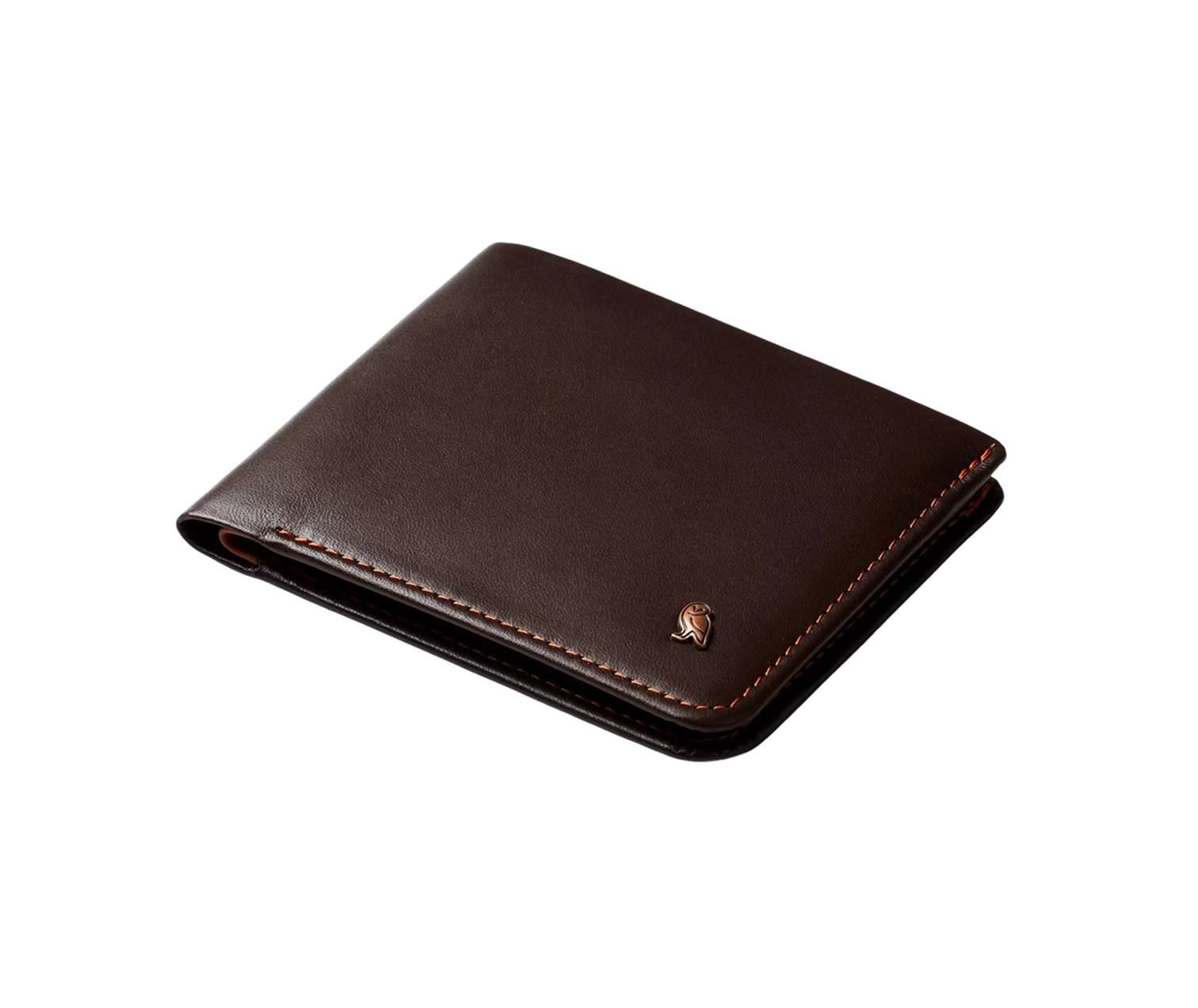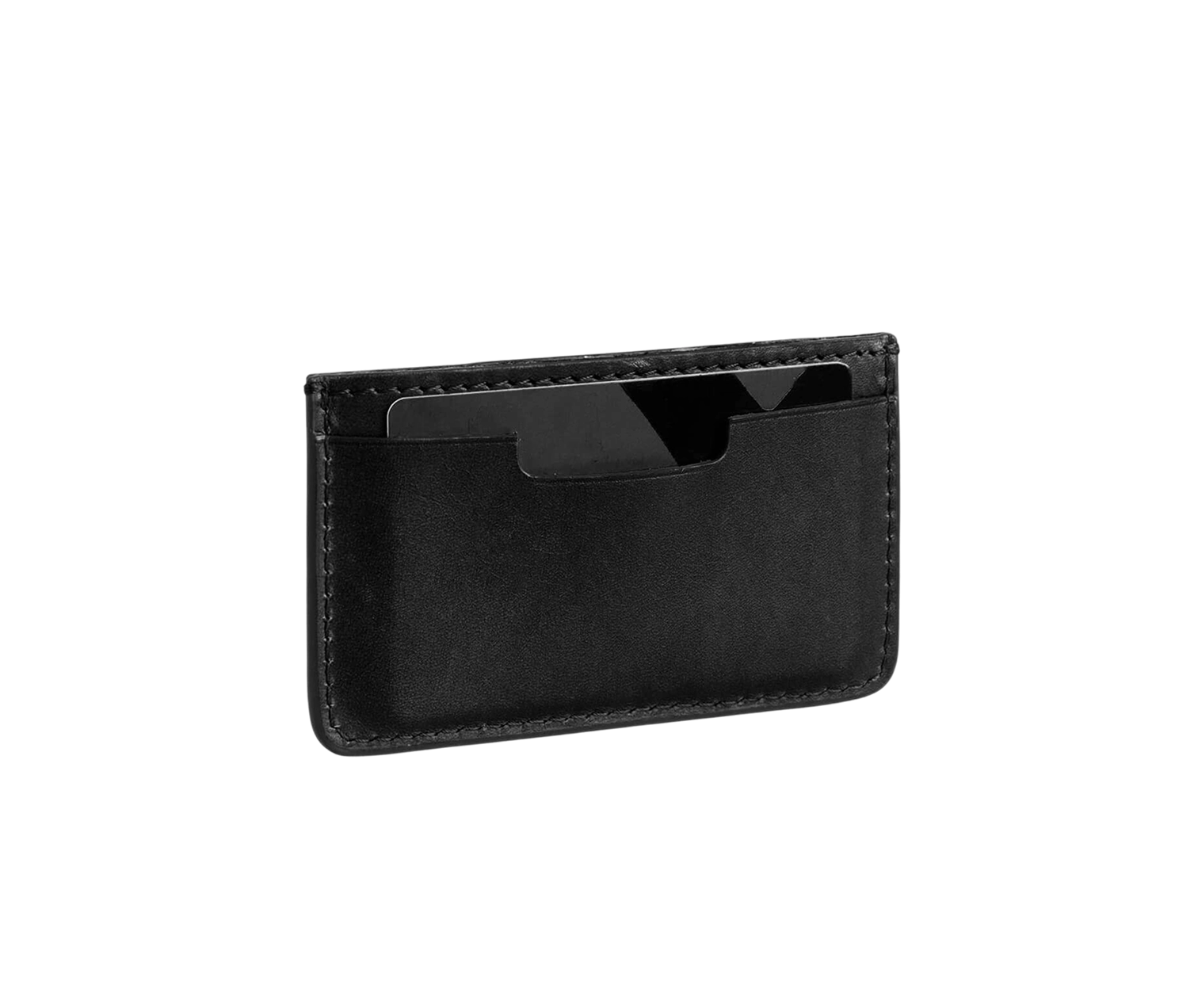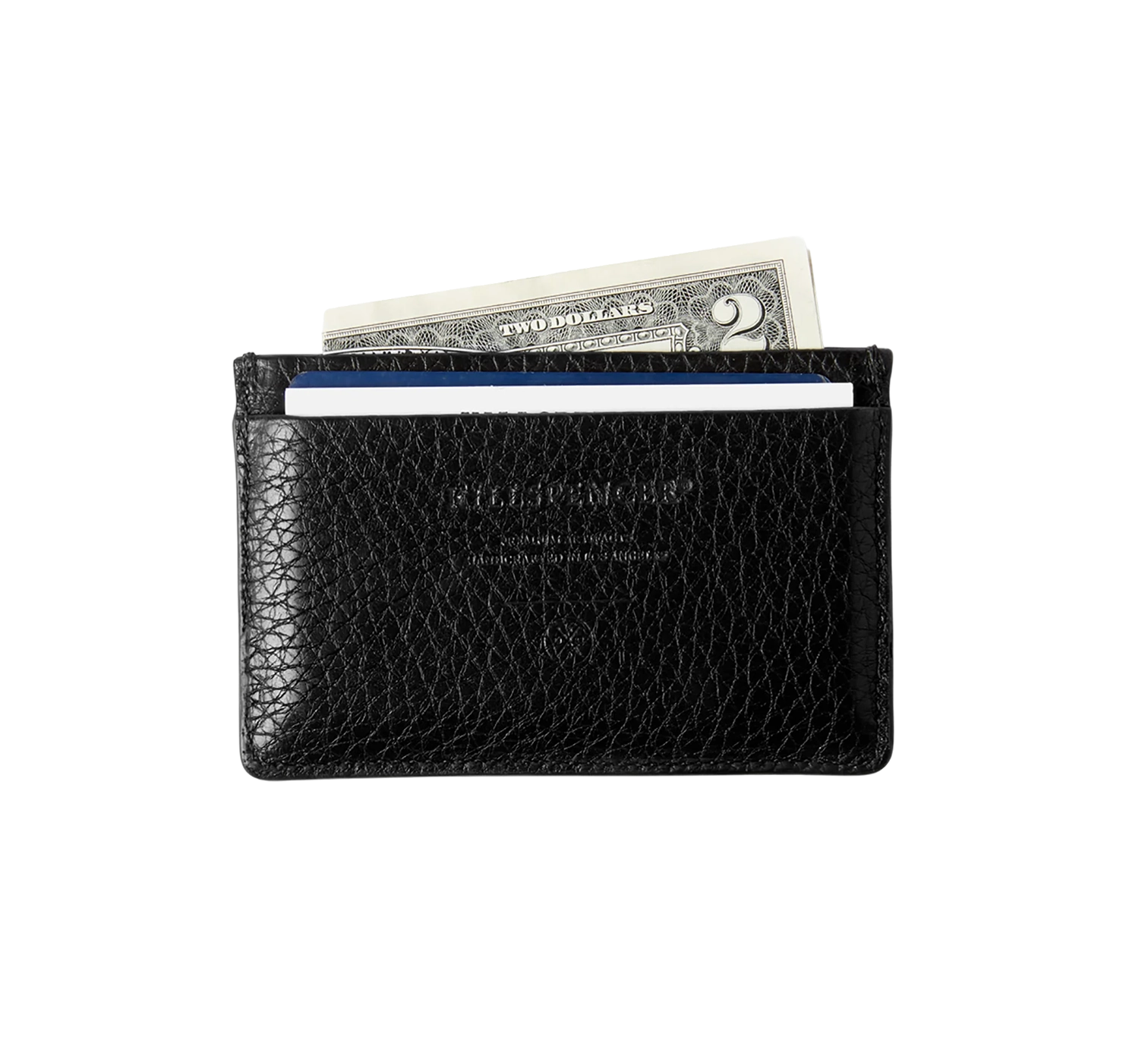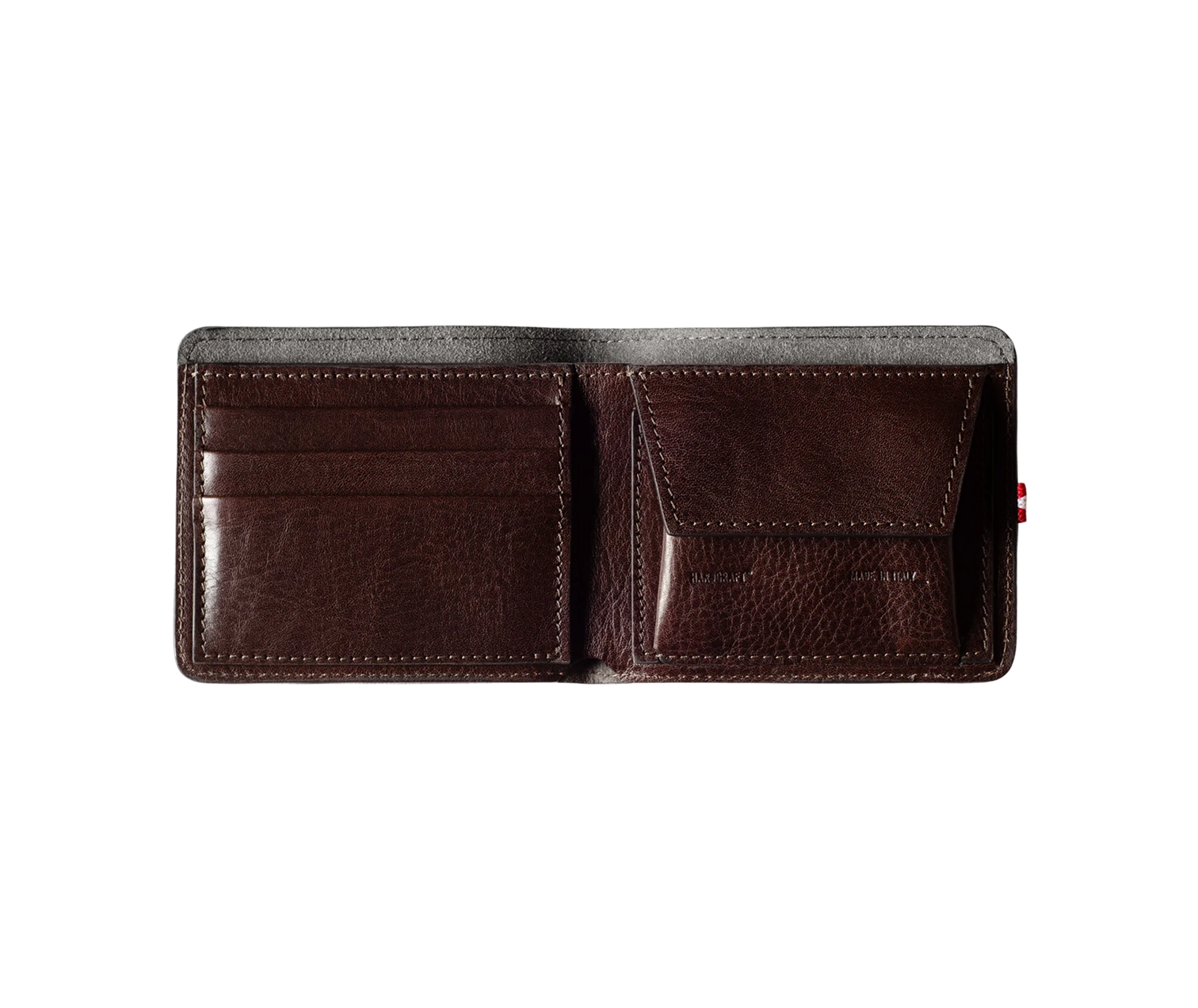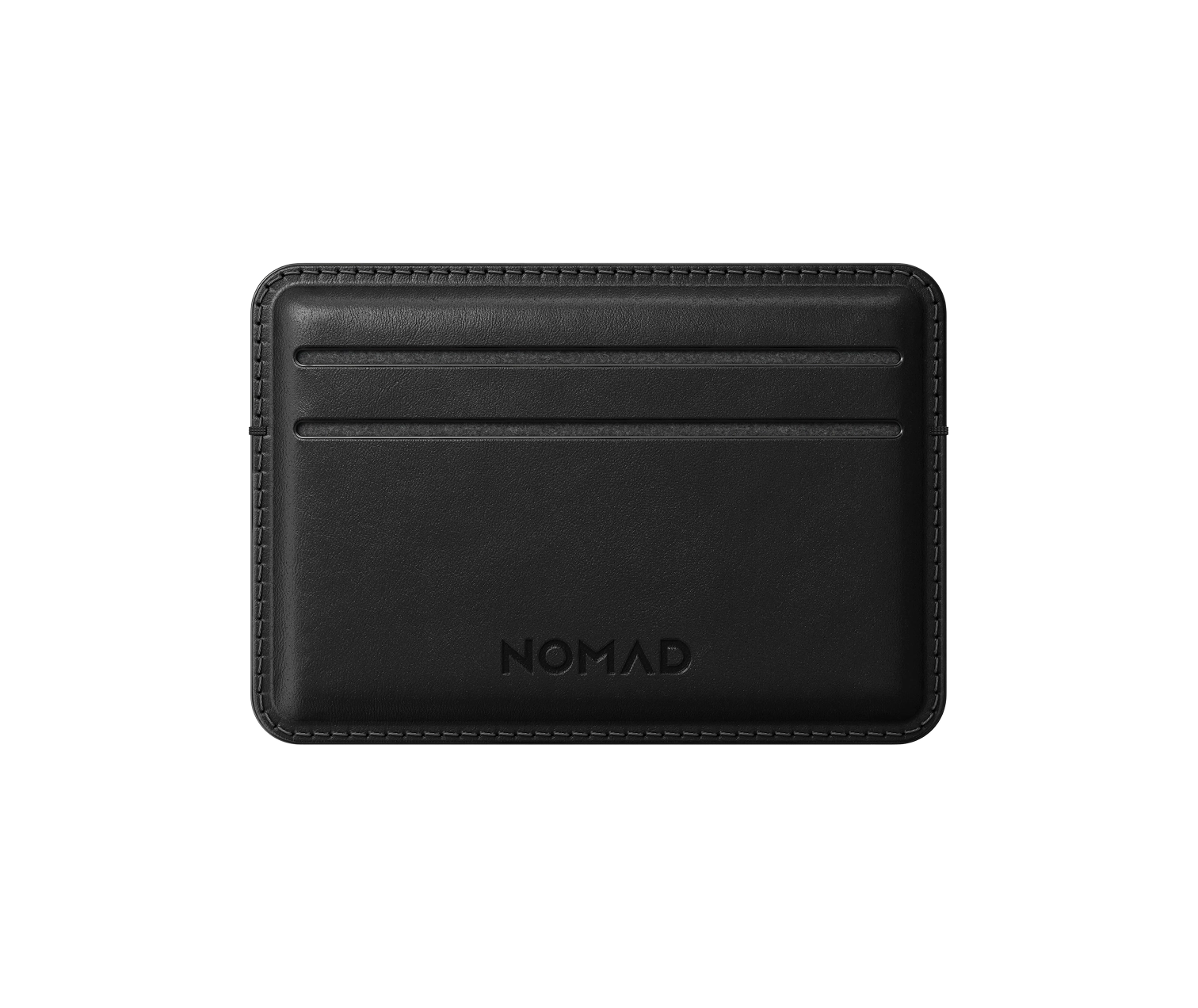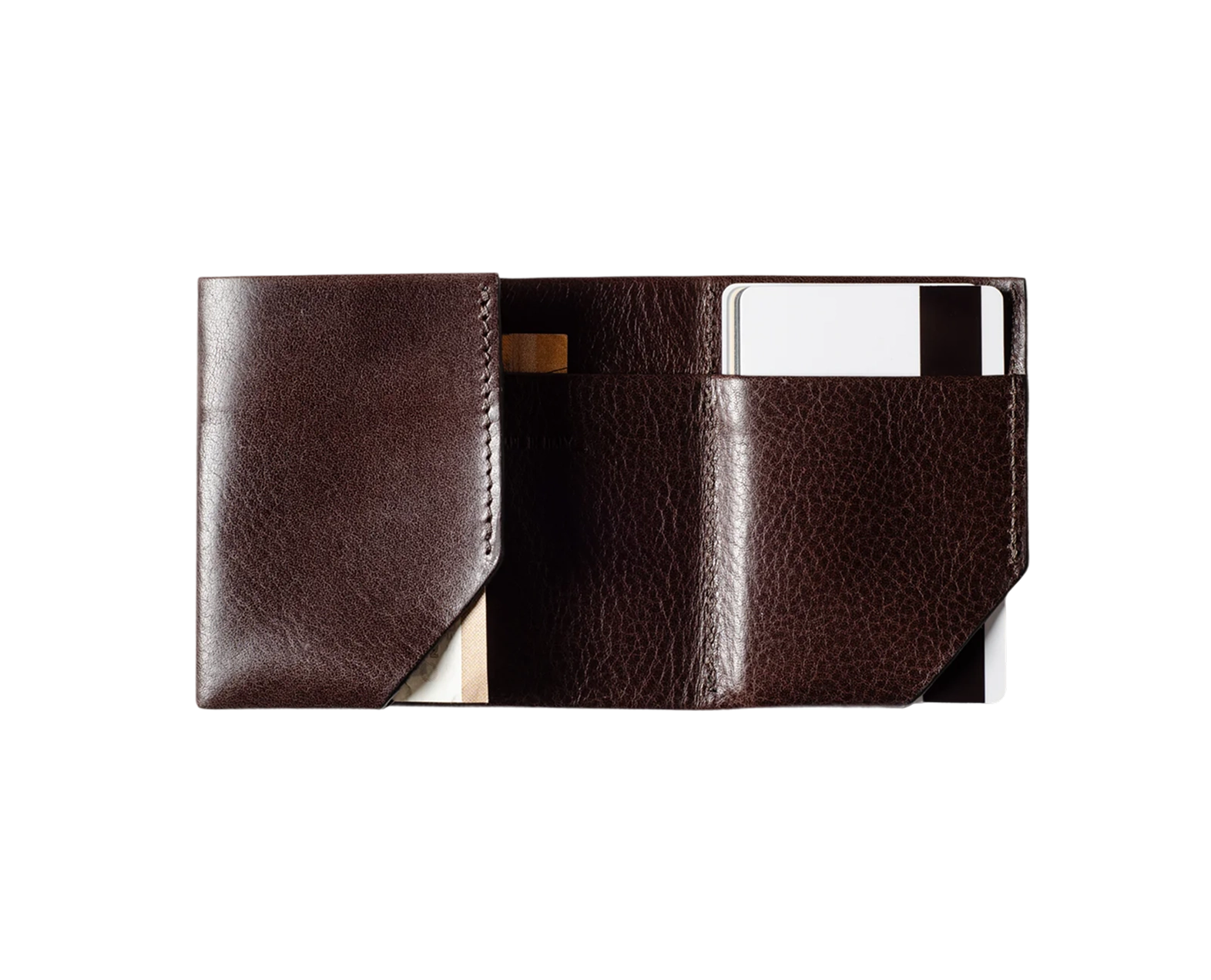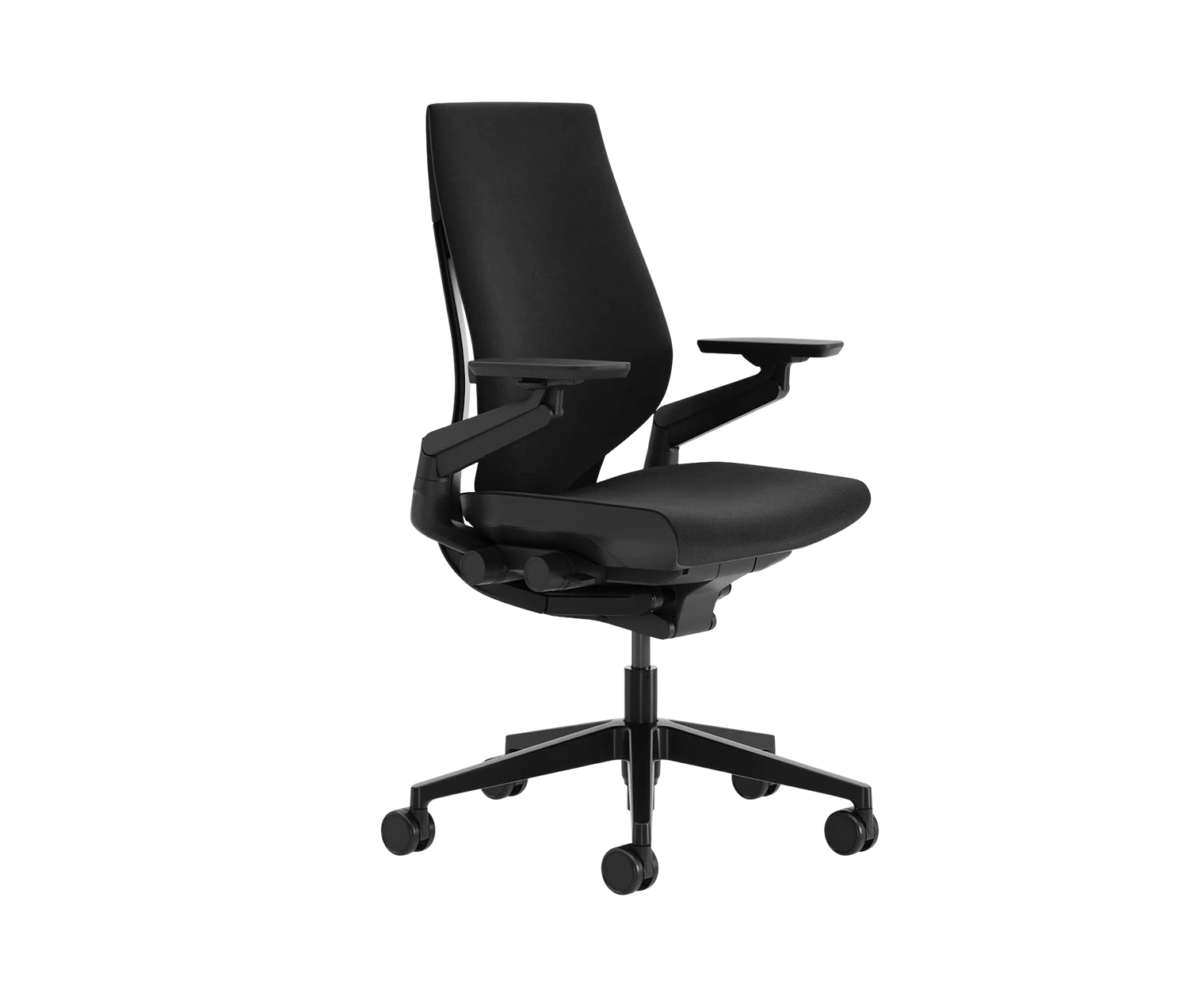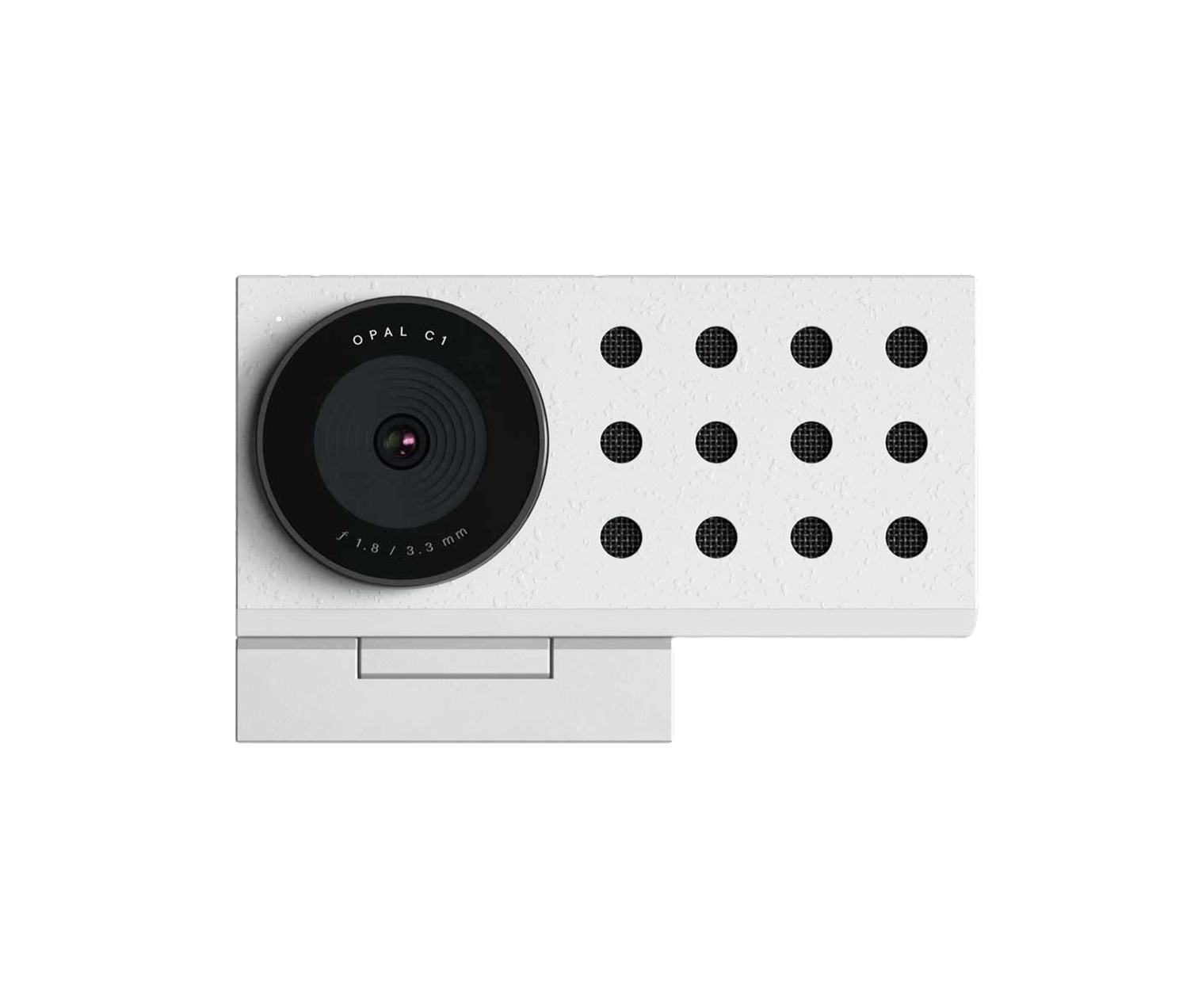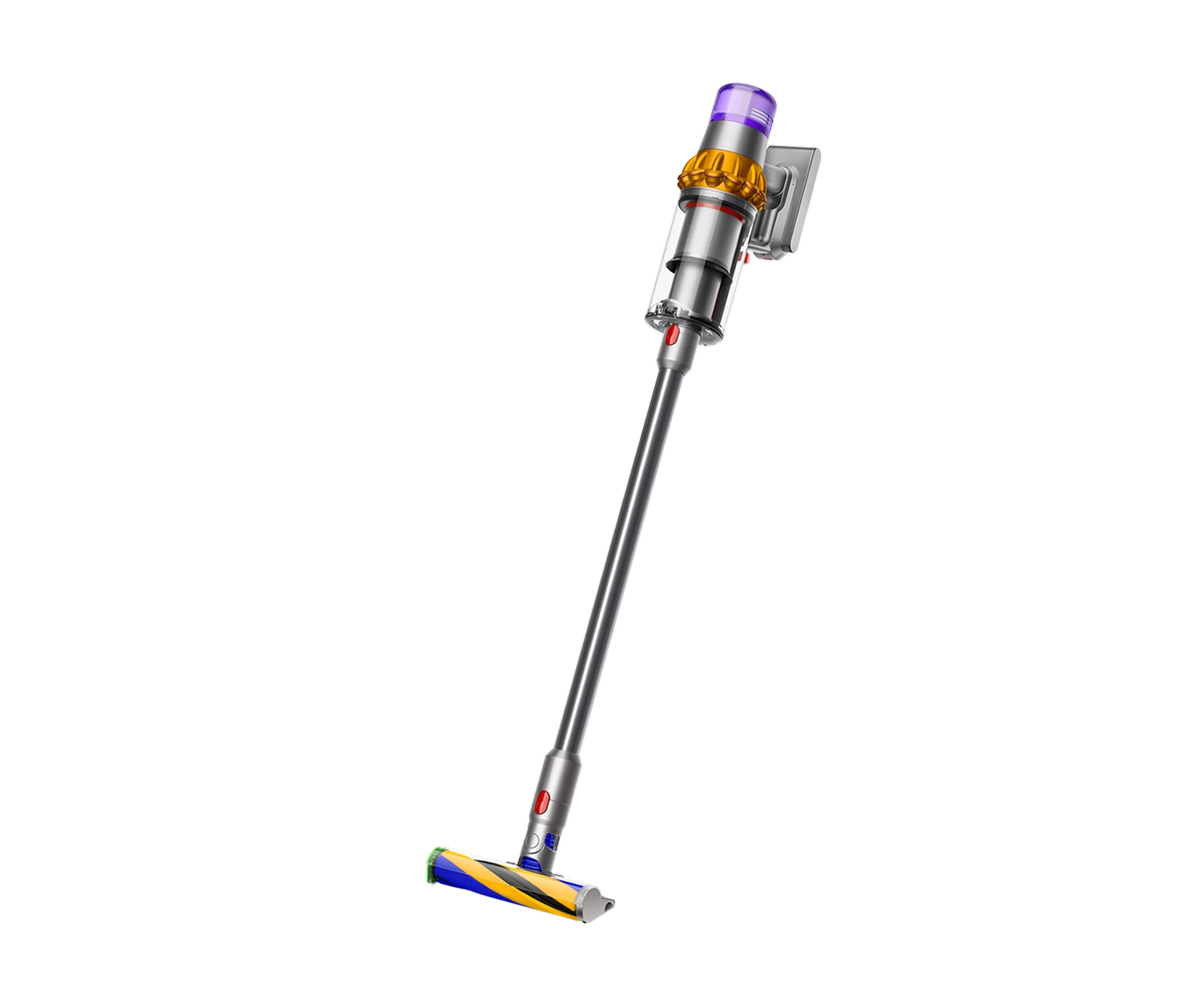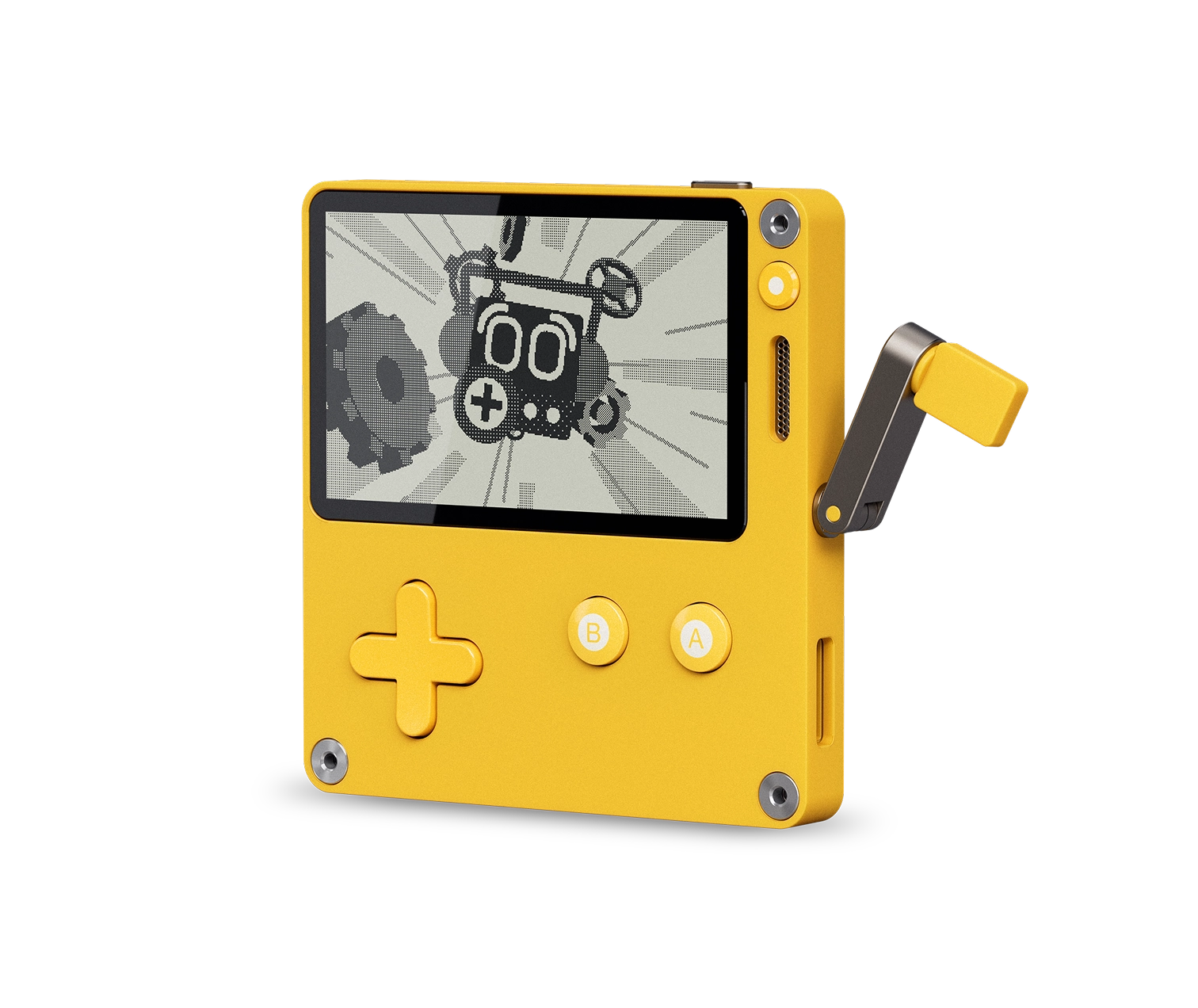Oct 20, 2025
·
·
A wallet worth buying does three things well. It holds cards and cash without bulk. The leather improves with age rather than deteriorates. The construction survives years of pocket carry without falling apart. What follows are six leather wallets that understand longevity.
Nomad Card Wallet
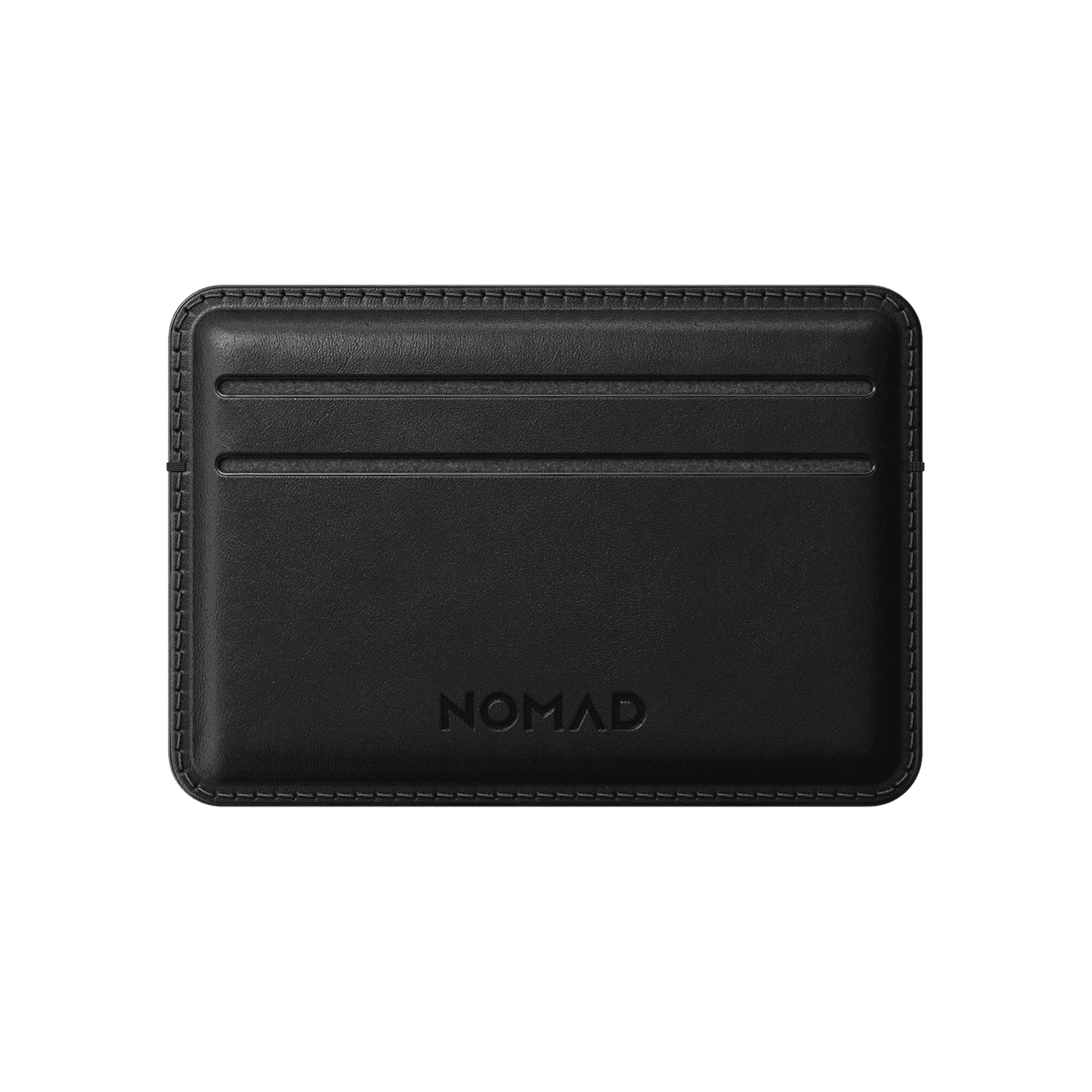
Nomad sources leather from Horween, the Chicago tannery that has supplied American bootmakers and bag manufacturers for over a century. The Card Wallet uses their vegetable-tanned cowhide, a material that darkens and smooths over months of handling. At 3.5 inches wide, it holds up to eight cards plus folded cash in a center slot.
Three card slots sit stacked on the front, three more on the back. The leather arrives with a subtle texture that registers under fingertips. Horween's tanning process means the wallet will patina unevenly, creating contrast where hands grip most often. This is intentional, not a flaw. The stitching uses heavy-duty thread in a contrasting color, a detail borrowed from workwear traditions that prioritize durability over invisibility.
Nomad skips exotic materials and unnecessary pockets. What remains is a straightforward card holder that proves quality leather can be accessible. The construction is minimal by design, which means fewer points of failure over years of daily carry.
Nordform Slim Wallet
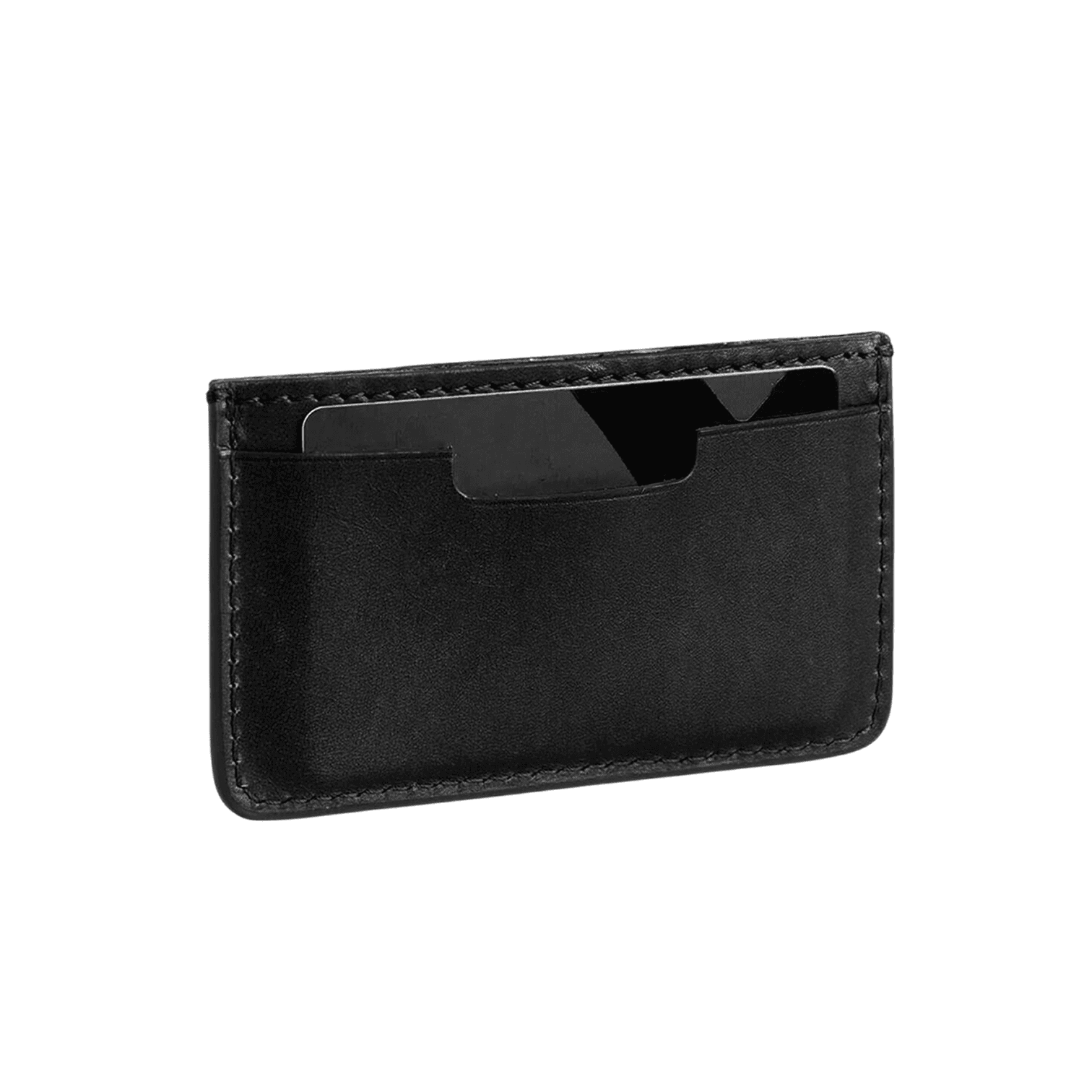
Swedish design follows different principles than American or Italian approaches. The Nordform Slim Wallet exemplifies this through radical simplification. Vegetable-tanned leather wraps around a single piece of elastic, creating four card slots and one cash pocket. The entire assembly measures 4mm thick when empty. No metal clips, no plastic inserts, no RFID blocking materials.
The elastic provides tension that keeps cards secure without rigid structure. This flexibility means the wallet adapts to varying card counts rather than maintaining fixed dimensions. Some days it holds three cards, other days ten. The leather edges are burnished rather than stitched, a finishing technique that creates smooth, sealed borders through friction and heat. This method has been used by leather workers for centuries because it works.
The vegetable-tanned leather will develop patina similar to wallets costing significantly more. Scandinavian minimalism here means subtraction without loss of function. What gets removed matters as much as what stays.
Killspencer Card Holder 2.0
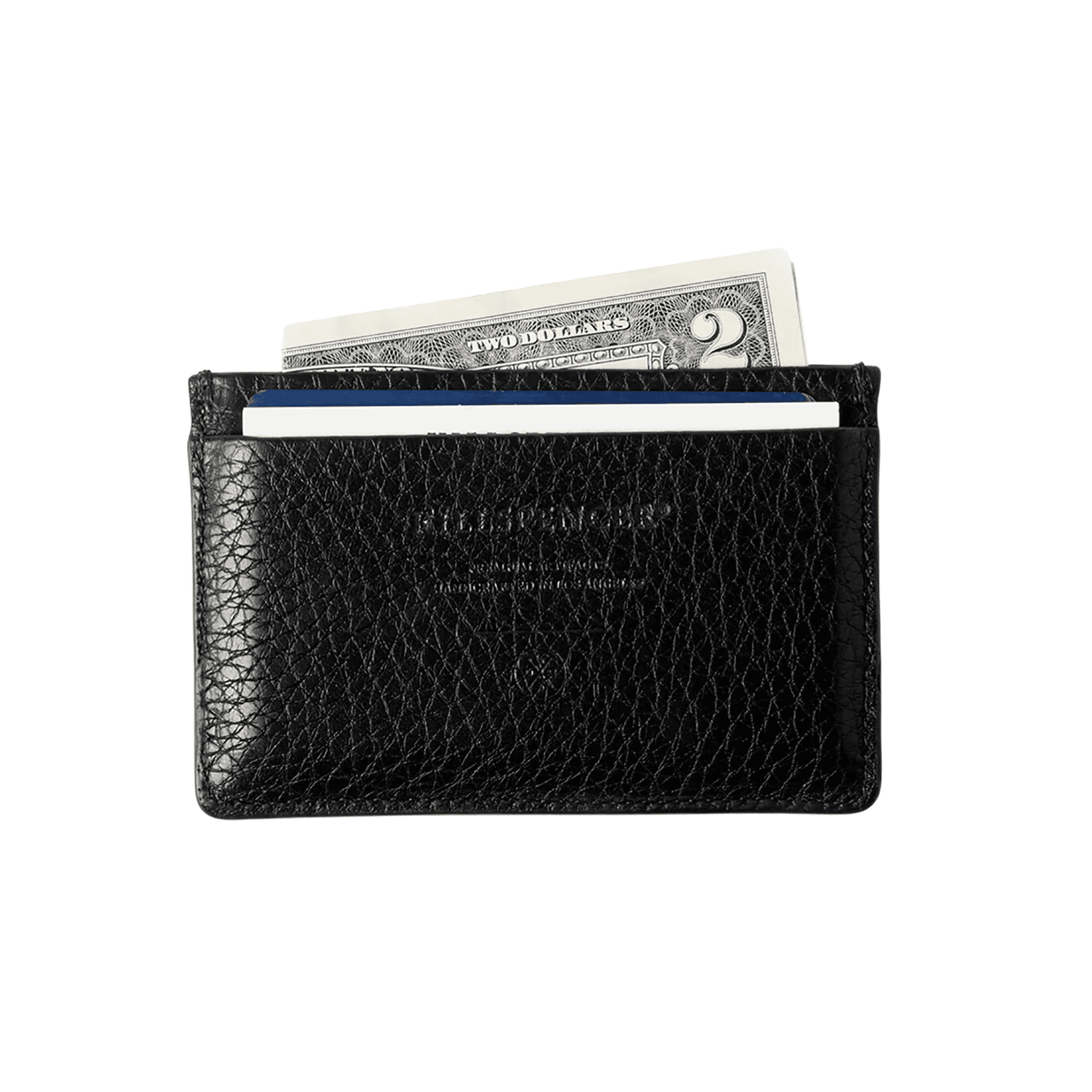
Killspencer builds products in Los Angeles using full-grain leather and minimal hardware. The Card Holder 2.0 uses structured leather with a subtle pebbled texture that hides scratches better than smooth finishes. At 4 inches wide, it holds several cards in a slim frame that fits easily into front or back pockets without creating bulk.
Multiple card slots secure contents while the structured leather maintains its shape even when empty, preventing the pocket sag that afflicts softer card holders. The seamless construction means no visible stitching on the exterior, a detail that requires precise cutting and assembly. This is a refined minimalist accessory for those who carry light but want lasting quality.
The structured leather protects cards from scuffing or bending during the chaos of daily carry. Subway turnstiles, dropped keys, accidental sitting on hard surfaces. These small impacts accumulate. Most ultra-thin wallets sacrifice protection for profile. The Card Holder 2.0 refuses that compromise.
Bellroy Hide & Seek
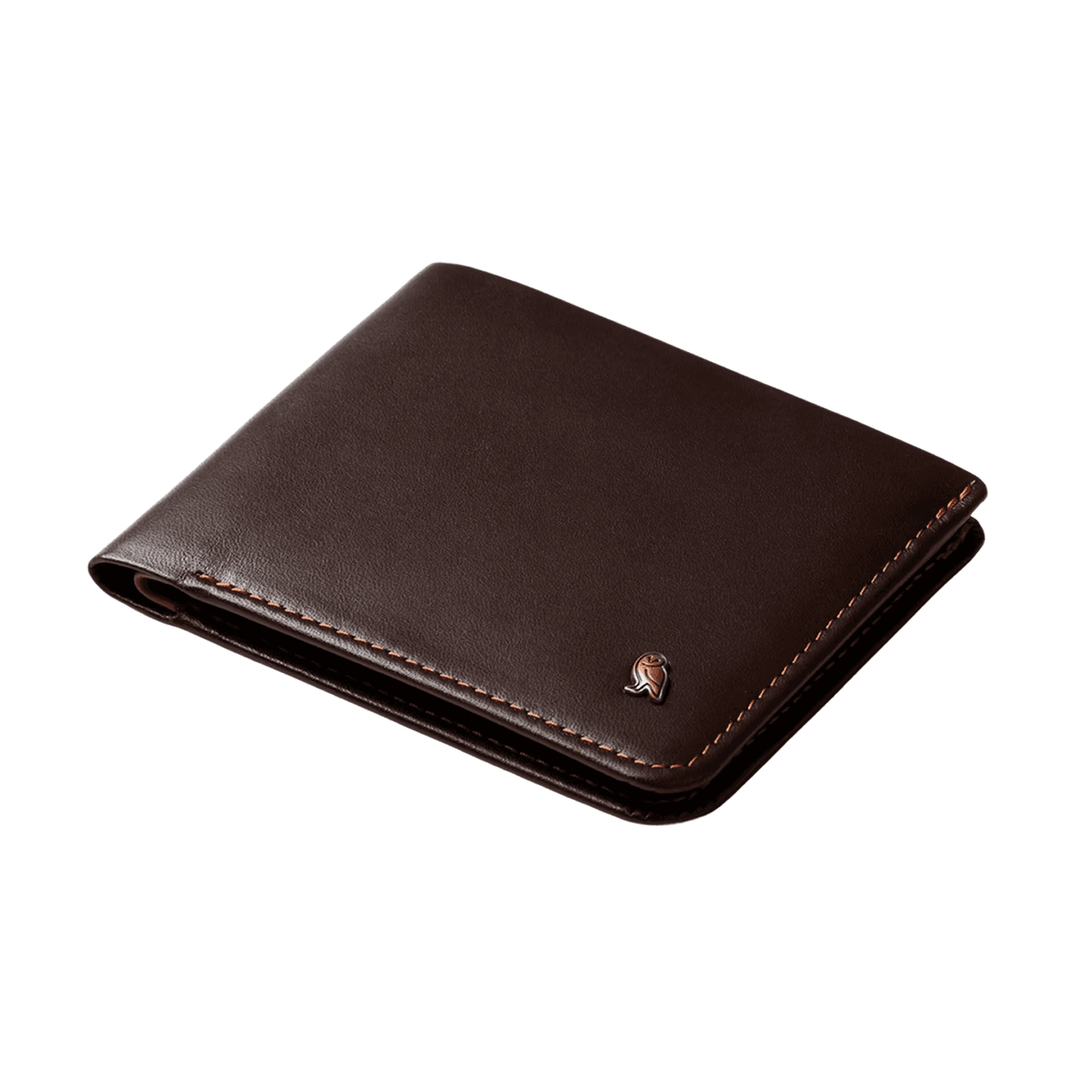
Bellroy built its reputation on solving the bifold bulk problem. The Hide & Seek maintains traditional bifold layout while measuring just 9mm thick. This reduction comes through strategic pocket placement and premium leather selection rather than material thinning that compromises durability. The wallet holds up to twelve cards across five slots, plus a hidden section behind the ID window for emergency cash or backup cards.
RFID protection arrives embedded in the leather itself rather than through foil layers that add thickness and eventually crack. The bill compartment sits flat when empty, avoiding the bulk typical of bifolds that maintain rigid form regardless of contents. Bellroy's leather comes from environmentally certified tanneries, a detail that matters during the multi-year lifespan these wallets achieve. Pull tabs aid card removal from internal slots, a small touch that becomes significant when fumbling for a transit card during morning commutes.
Traditional bifolds often exceed 20mm thickness when loaded with a realistic card count. This stays under 15mm with full capacity. The hidden compartment behind the ID window is not gimmick. It solves the problem of where to stash emergency cash or a backup credit card that should not mix with daily-use cards. The name makes sense once the design is understood.
Hardgraft Billfolder
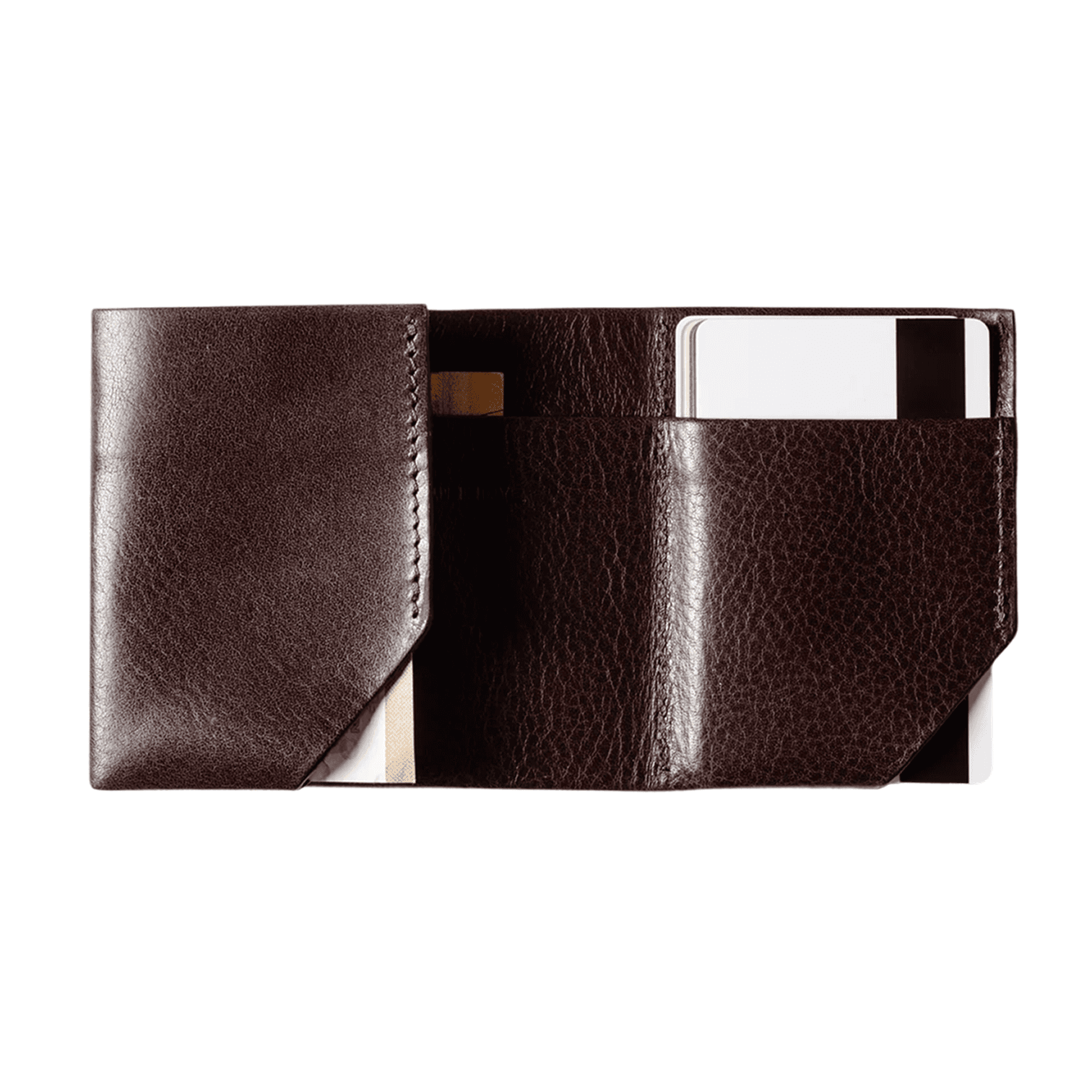
Hardgraft sources leather from Italian tanneries that supply luxury fashion houses, then applies that material to functional goods. The Billfolder uses vegetable-tanned leather hand-stitched with contrasting thread in a color that shifts based on the leather shade selected. The construction is traditional bifold, executed with materials typically reserved for goods costing significantly more.
Four card slots line each interior panel. The bill compartment runs the full width, accommodating international currency without folding, a consideration that matters for anyone who travels regularly. Wool felt lines the interior, protecting cards from scratching and adding structural support without plastic reinforcement that eventually cracks in cold weather. The leather arrives with natural grain variations that prove organic origin rather than embossed uniformity.
Over months, the exterior darkens where oils from hands accumulate. This gradual transformation is what vegetable-tanned leather does best. The hand-stitching survives years of use because thread tension is controlled manually. Machine stitching at speed cannot replicate this durability. Each stitch receives individual attention, which sounds inefficient until the wallet reaches year five without a single failed seam.
Hardgraft Cash Card Wallet
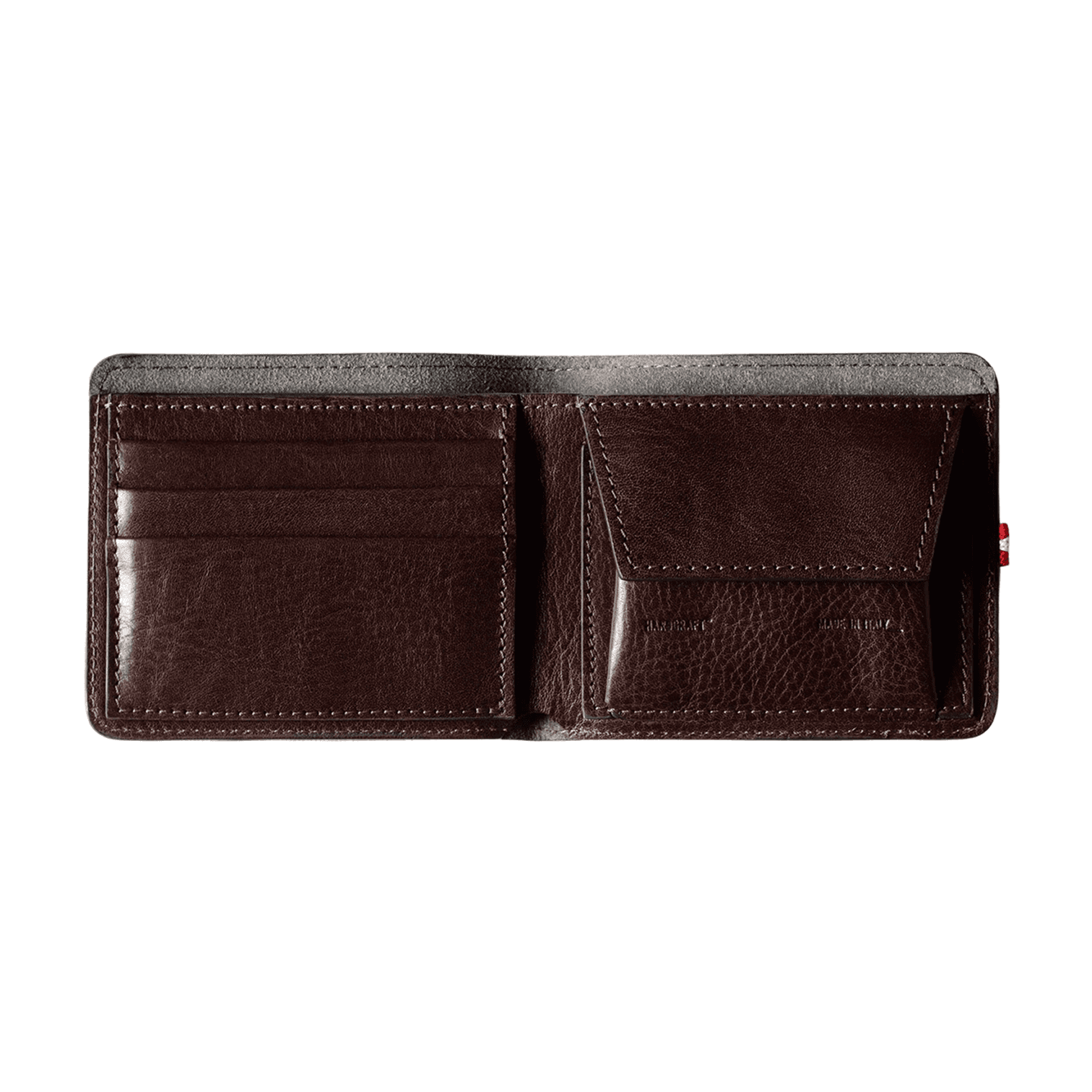
The Cash Card Wallet shares material sourcing with the Billfolder but adjusts the layout for different carry preferences. Six card slots spread across the interior, three per side. The bill section sits horizontally rather than vertically, creating a squarer profile that some find more comfortable in front pockets. The same vegetable-tanned Italian leather and hand-stitched construction apply.
Wool felt lining protects cards while adding subtle color contrast visible when opened. The leather edges are hand-burnished, a finishing process that seals fibers through friction and heat rather than paint or binding that chips over time. This technique means edges darken naturally, developing character rather than showing wear. The stitching uses saddle stitch method, where each hole receives thread from both sides simultaneously for maximum strength.
Having two Hardgraft options demonstrates how layout variations matter. Some prefer vertical bifolds that slip into jacket pockets. Others want horizontal profiles that sit flatter in jeans. Material quality remains constant across both. The choice becomes about carry preference rather than budget constraint.
What Separates Leather That Lasts
Full-grain leather retains the outermost layer of the hide, including natural grain patterns and minor imperfections that prove authenticity. This is the most durable grade because surface fibers remain intact. Top-grain leather has the surface sanded to remove imperfections, then embossed with artificial grain. It looks uniform initially but ages poorly because protective fibers were removed. All six wallets here use full-grain leather. This choice affects longevity more than any other single factor.
Vegetable tanning uses plant-based tannins, requires months of processing, and produces leather that develops rich patina over years. Chrome tanning uses chemicals, finishes in days, and creates leather that resists aging. The Nomad, Nordform, and both Hardgraft wallets use vegetable tanning. Killspencer and Bellroy use variations that achieve similar results through different methods.
Hand-stitching uses saddle stitch technique where each hole receives thread from both directions. If one thread breaks, the remaining thread holds the stitch. Machine stitching uses a single continuous thread. One break compromises the entire seam. Hardgraft employs hand-stitching throughout. This detail matters during year five when poorly stitched wallets fail and require replacement.
Thickness matters for daily carry. Leather wallet dimensions range from 4mm to 25mm when loaded with typical card counts. Anything exceeding 15mm creates noticeable pocket bulge that affects comfort. The Nordform measures 4mm empty and stays under 10mm loaded. The Bellroy stays under 15mm with full capacity. The Hardgraft wallets accept slightly more thickness in exchange for traditional bifold layout and cash capacity. Choose based on actual carry needs rather than theoretical maximums. Someone who carries six cards does not need a wallet designed for twelve.
The patina process cannot be rushed. Vegetable-tanned leather contains natural oils that redistribute under pressure and heat from handling. Areas gripped frequently darken first. Edges that rub against pockets smooth and shine. This transformation requires months or years depending on carry frequency and hand chemistry. Conditioning products add temporary color but prevent natural oil migration that creates authentic patina.
The Nomad, Nordform, Killspencer, and Hardgraft wallets all arrive relatively light in color intentionally. Starting light allows the full transformation to become visible. Some find this aging desirable, viewing each mark as evidence of time invested. Others prefer leather that maintains original appearance indefinitely. This choice determines whether a wallet looks better or simply older after three years of daily carry.
A wallet worth buying operates beyond its purchase moment. It improves with age because it began with quality materials. The stitching survives because it was executed properly from the start. The leather develops character rather than cracks because tanning was not rushed to meet quarterly targets. These six wallets share this quality. The question becomes which features matter most for individual carry habits, not which costs least or most.
